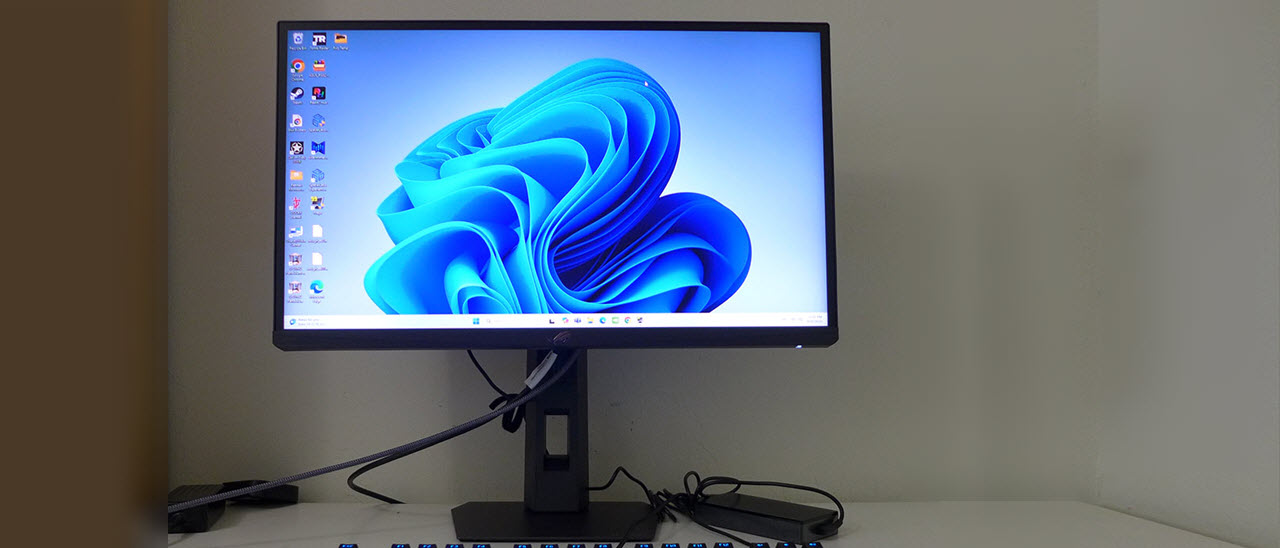Why you can trust Tom's Hardware
Asus gaming monitors nearly always come set to their Racing picture mode and in the XG248QSG’s case, that’s the best choice. It doesn’t need calibration, but if you want to tweak, the controls are precise and available.
Grayscale and Gamma Tracking
Our grayscale and gamma tests use Calman calibration software from Portrait Displays. We describe our grayscale and gamma tests in detail here.
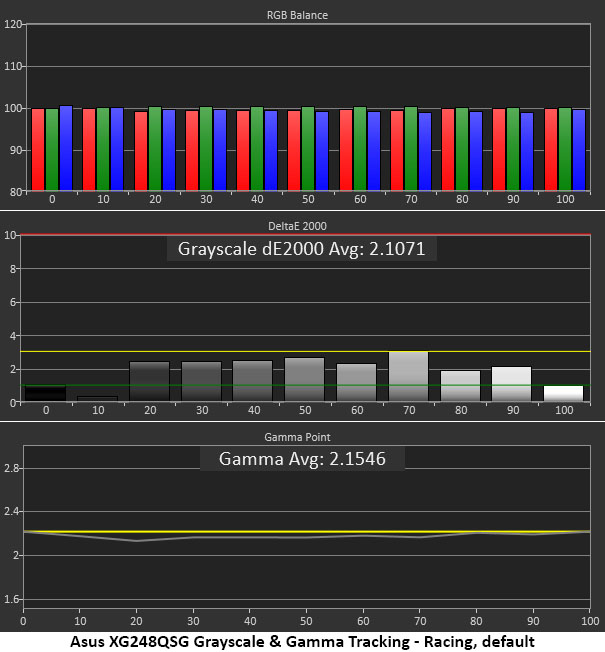
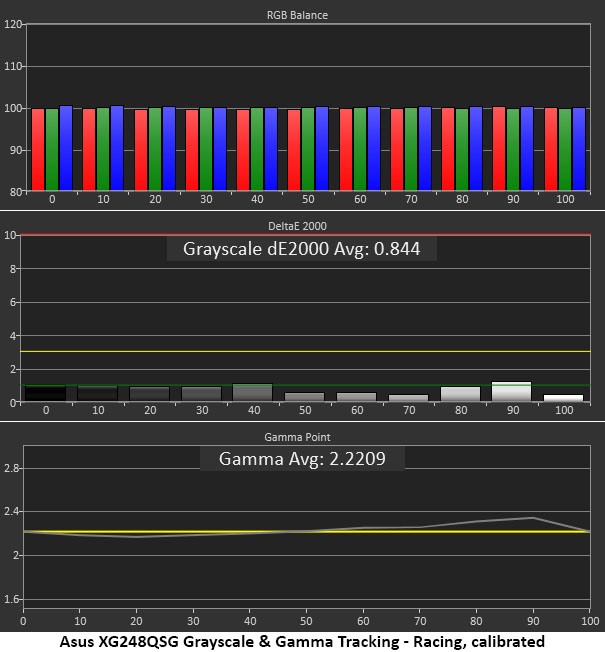
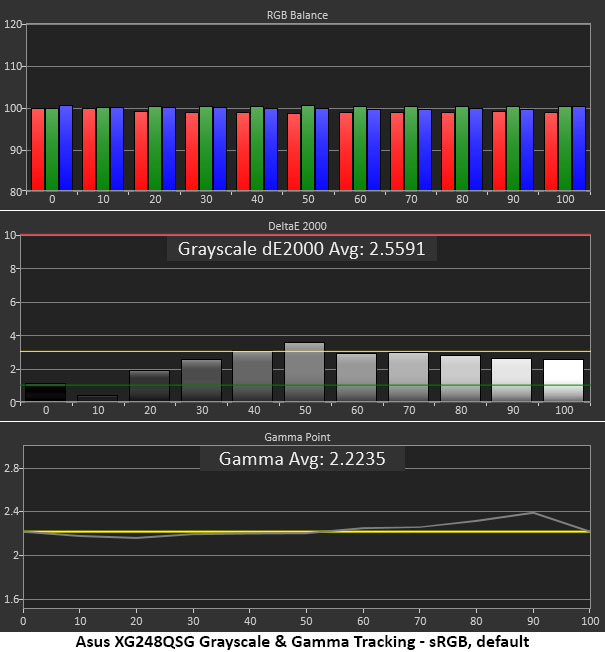
The XG248QSG default chart shows no real cause for complaint. Grayscale tracking is free from visible errors and gamma runs very close to the reference line. It’s a tad light but you’re unlikely to notice that in actual content. Calibration reduces those grayscale errors to a low average with all values under 1dE except for 90% brightness. Interestingly, I had to bump the contrast slider up to remove all highlight clipping. Hey, whatever gets the job done. Doing that introduced a slight gamma bump at 90% but I couldn't see a problem in content. This is excellent performance.
I measured the sRGB gamut option in the color menu rather than the sRGB picture mode, which has no calibration options. It’s also very accurate, and further adjustment would yield an even better chart. I noted the same gamma anomaly at 90% brightness, not a problem.
Comparisons
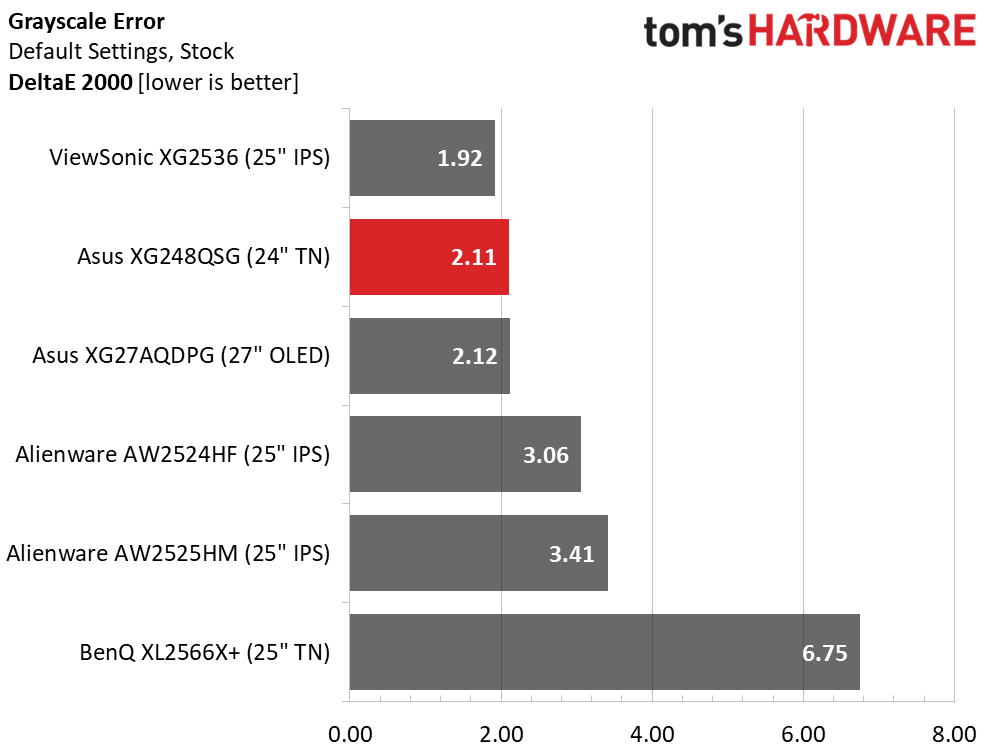
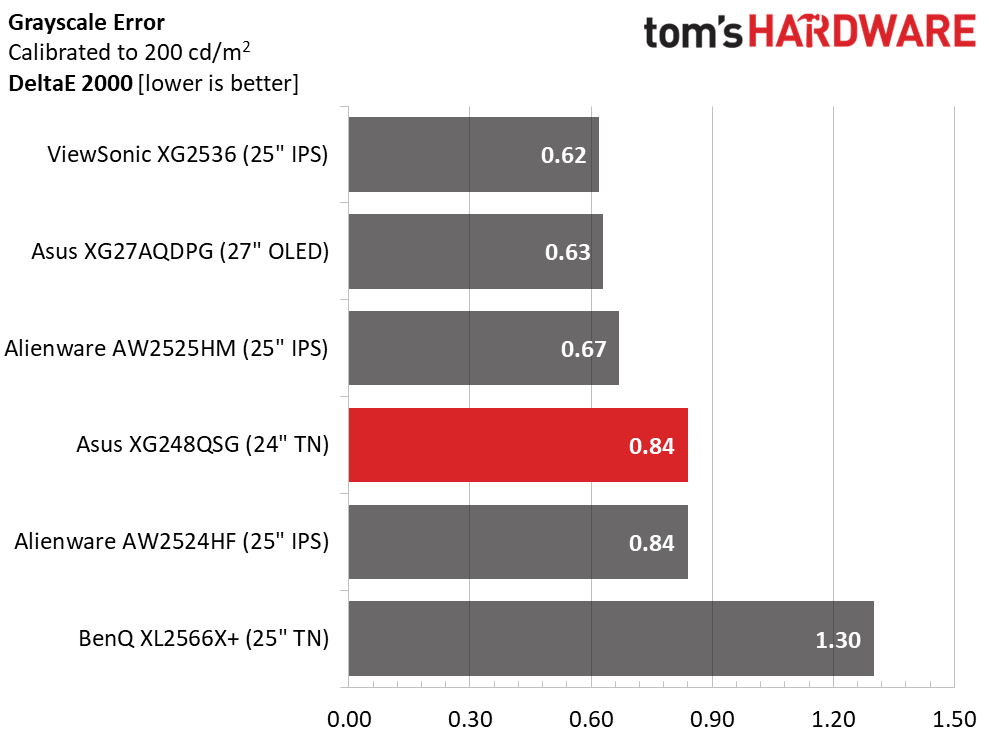
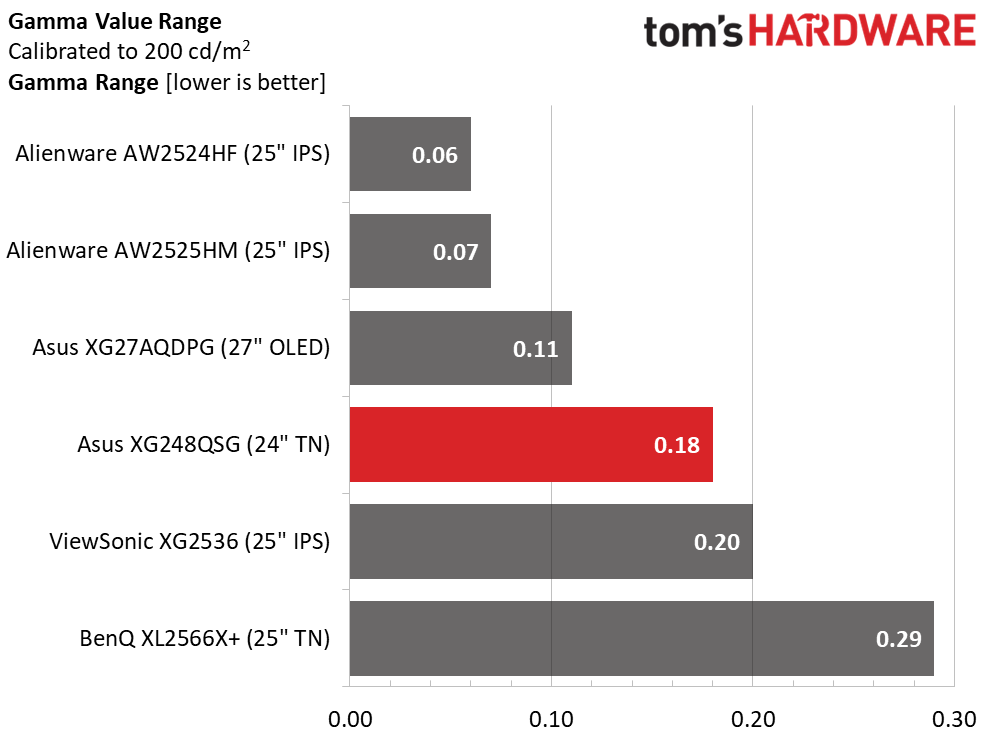
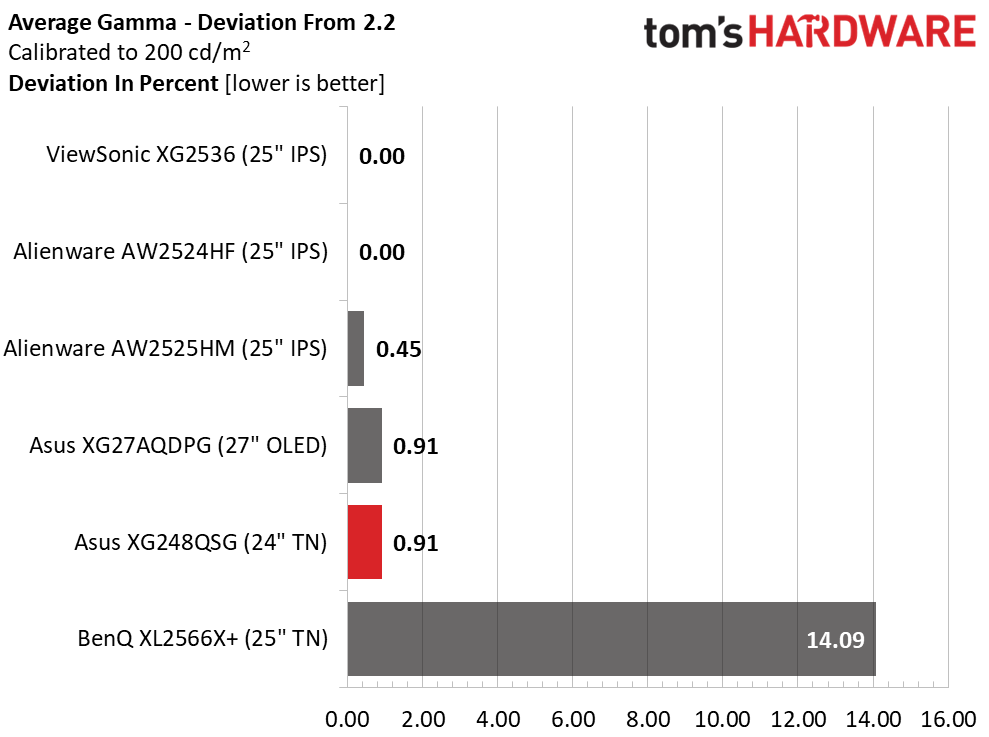
The XG248QSG is one of the more accurate monitors in the group out of the box. With grayscale tracking of 2.11dE, there is no need for tweaking. However, a few adjustments brought the number down to a professional-level 0.84dE, good enough for fourth place in this competitive group. Once calibrated, there is no visible difference in color accuracy among them.
The gamma results are tight as well, except for the BenQ, which does its own thing for luminance tracking. The XG248QSG has excellent gamma with a small 0.18 range of values and a 0.91% deviation from 2.2. The actual value is 2.22. This is excellent performance.
Color Gamut Accuracy
Our color gamut and volume testing use Portrait Displays’ Calman software. For details on our color gamut testing and volume calculations, click here.
Get Tom's Hardware's best news and in-depth reviews, straight to your inbox.
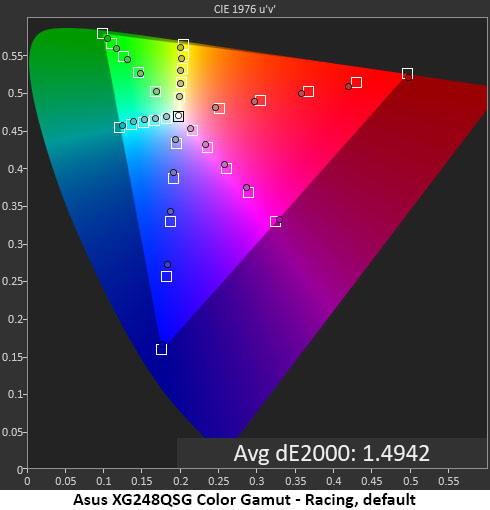
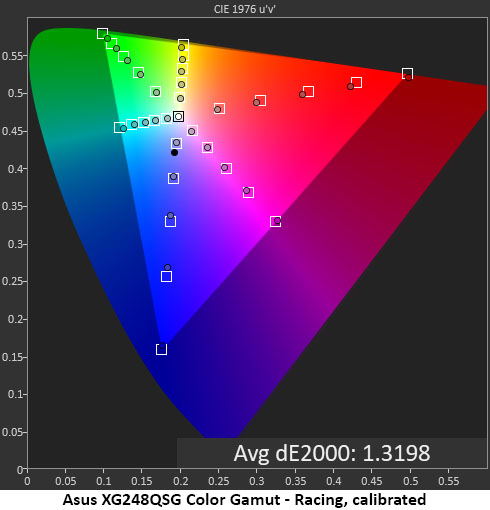
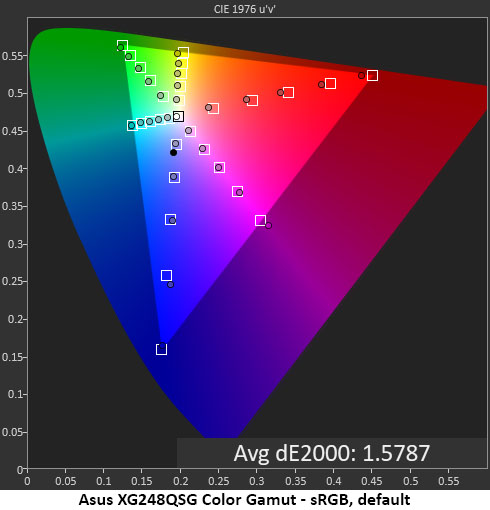
The XG248QSG has exemplary color gamut accuracy, whether you calibrate or not. Viewing color bar patterns, I could not see a difference between the before and after. There is excellent gamut coverage too, with full rendering of red and blue and only a slight undersaturation in green. Hue points are all on target as well. This is professional display-worthy performance.
The sRGB gamut is a tad undersaturated in red but fully covered in the other five colors. The yellow hue error seen above can be removed with a grayscale calibration. With an average error of 1.58dE, there is nothing to complain about here.
Comparisons
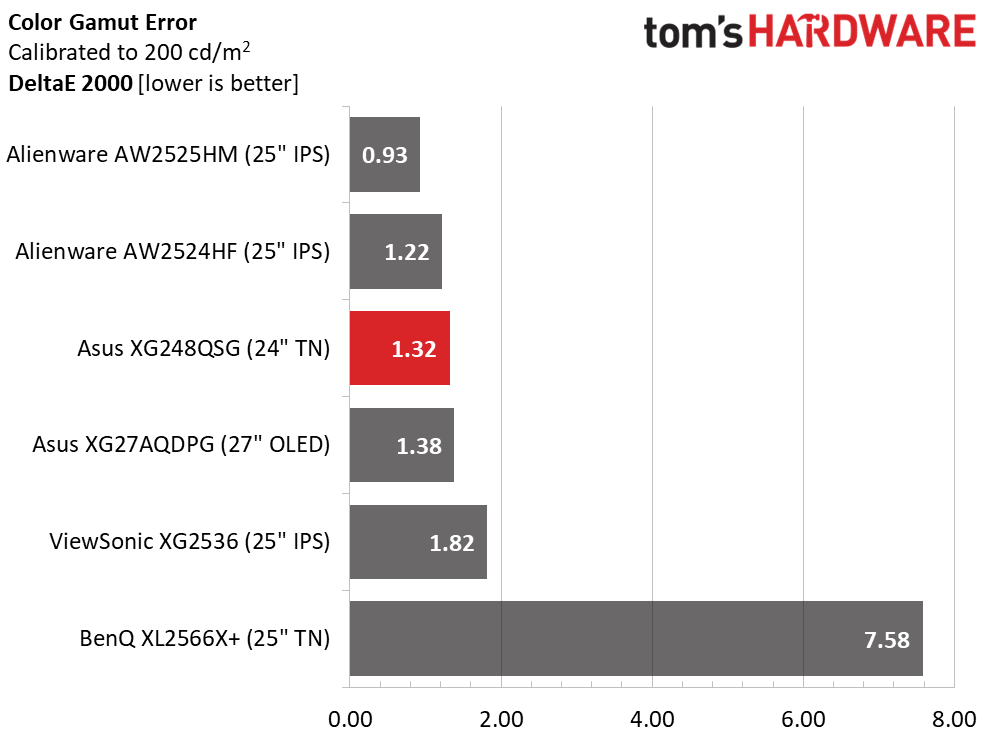
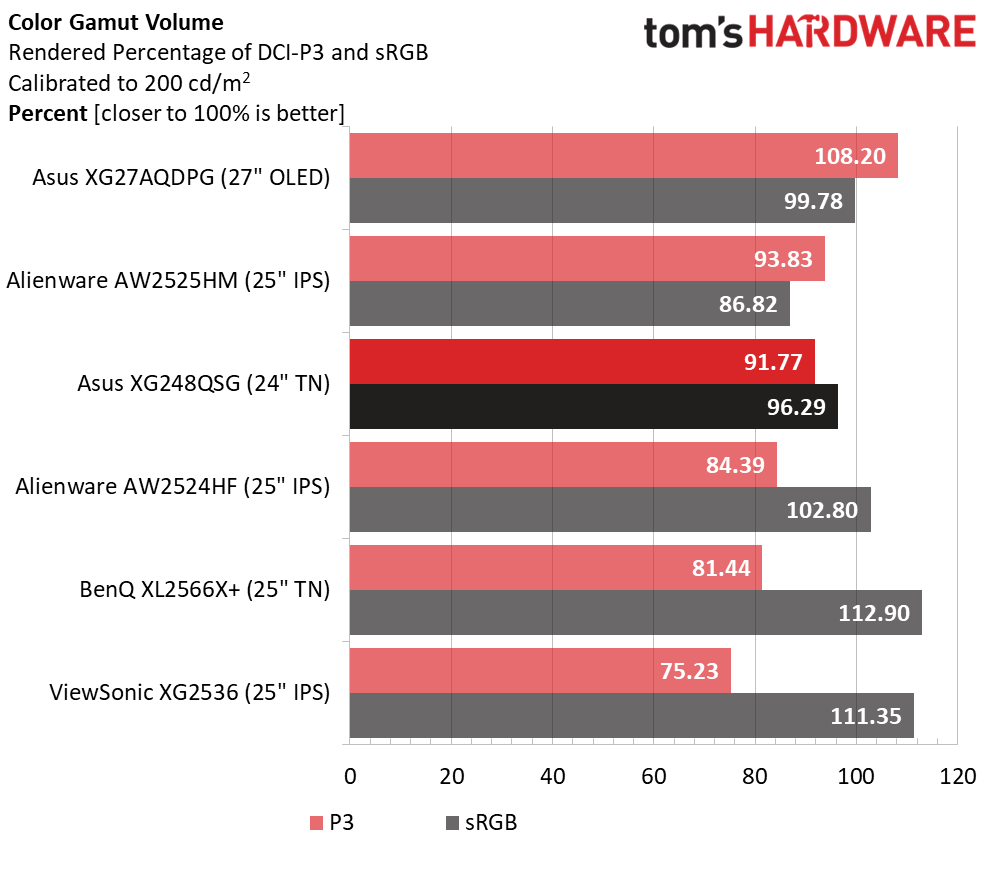
Once again, the BenQ is showing a certain sort of independence in the color tests while the other screens, including the XG248QSG, stick to industry standards. The spread of error values from first to fourth is extremely small. The XG248QSG doesn’t sacrifice color accuracy for speed in any way.
The volume test shows that most speedy LCDs are less colorful than the XG248QSG, which sets it apart from the competition. It fully covers red and blue and only comes up slightly short in the green primary. Though you won’t mistake it for the Quantum Dot OLED at the top of the chart, it will best all but the AW2525HM for color volume. The 96.29% value for sRGB is solely due to a slightly undersaturated red primary. In this category, this is excellent performance.
Test Takeaway: The XG248QSG has excellent color accuracy and high gamut volume when compared to other ultra-quick LCDs. If you want more color, you have to go OLED or pick a slower LCD. Asus delivers a factory-calibrated screen that can be enjoyed right out of the box.
MORE: Best Gaming Monitors
MORE: How We Test PC Monitors
MORE: How to Buy a PC Monitor
Current page: Grayscale, Gamma and Color
Prev Page Brightness and Contrast Next Page HDR Performance
Christian Eberle is a Contributing Editor for Tom's Hardware US. He's a veteran reviewer of A/V equipment, specializing in monitors. Christian began his obsession with tech when he built his first PC in 1991, a 286 running DOS 3.0 at a blazing 12MHz. In 2006, he undertook training from the Imaging Science Foundation in video calibration and testing and thus started a passion for precise imaging that persists to this day. He is also a professional musician with a degree from the New England Conservatory as a classical bassoonist which he used to good effect as a performer with the West Point Army Band from 1987 to 2013. He enjoys watching movies and listening to high-end audio in his custom-built home theater and can be seen riding trails near his home on a race-ready ICE VTX recumbent trike. Christian enjoys the endless summer in Florida where he lives with his wife and Chihuahua and plays with orchestras around the state.
-
Shiznizzle $1000 for a 1080p rectangle thing.Reply
Is it possible to tell the difference between 120 hz and 340 hz?
Possibly, but i doubt it.
How about from 340 to 610?
My answer is no.
If you say yes, then do a blind test and tell us which is which once there are enough 600 hz monitors on the market so you cant learn their color profiles and base your decision on that. Better yet. Do a black and white 600 hz test. Refresh rate is refresh rate so color should not matter. You clain to see the difference so tell us which one.
What do you mean you cant see the difference between 610 and 472? Are you blind?
We are now getting into the absurd levels of tech that not even humans can see the difference of. -
timsSOFTWARE Reply
You can certainly tell the difference between even 120 and 240 - ex. just move the mouse or a window around on the desktop. And because there is still motion blur even at 240, even reducing that by a further 2/3s with 700hz - there would still probably be room to reduce it further; maybe going to 2-3Khz before you'd be hard pressed to tell it was there.Shiznizzle said:$1000 for a 1080p rectangle thing.
Is it possible to tell the difference between 120 hz and 340 hz?
Possibly, but i doubt it.
How about from 340 to 610?
My answer is no.
If you say yes, then do a blind test and tell us which is which once there are enough 600 hz monitors on the market so you cant learn their color profiles and base your decision on that. Better yet. Do a black and white 600 hz test. Refresh rate is refresh rate so color should not matter. You clain to see the difference so tell us which one.
What do you mean you cant see the difference between 610 and 472? Are you blind?
We are now getting into the absurd levels of tech that not even humans can see the difference of.
But for professional gamers that buy these monitors, I think the bigger gain is actually in input lag from running at higher FPS, and being able to run the game effectively uncapped FPS wise without introducing screen tearing. -
Toomanyuserstaken So when you tested the input lag for this monitor, did you run the highest overdrive settings? Wouldn’t this improve the input lag scores even further? With asus claims of .8ms input latency you would assume this would be the fastest monitor ever created, but it isn’t even top 5!Reply -
Toomanyuserstaken Reply
Also, do you plan to test the asus pg27aqwp-w?Toomanyuserstaken said:So when you tested the input lag for this monitor, did you run the highest overdrive settings? Wouldn’t this improve the input lag scores even further? With asus claims of .8ms input latency you would assume this would be the fastest monitor ever created, but it isn’t even top 5!
I am almost positive this will be the fastest monitor when speaking about input lag. Especially with no DSC
